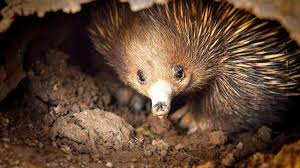Building a picture of ancient plants
For years, palaeontologists have actually been actually examining rocks coming from Victorian webinternet web sites. Towards develop the grow older of the recuperated dinosaur bones, we've required the proficiency of palynologists - palaeontologists that examine tiny fossil spores as well as plant pollen created through vegetations.
Palynologists determined essential types that they liquified away from rocks. They deduced the dinosaur bones varied in grow older coming from 130 towards one hundred thousand years of ages.
Simultaneously they were actually thoroughly audio all of the tiny spores as well as plant pollen they viewed in the moves towards develop a photo of the vegetations with the Very early Cretaceous duration.
A planet-altering shift
The shift coming from a globe without blossoms towards one along with blossoms has actually captivated researchers for centuries, very most famously Charles Darwin that labelled all of them "an abominable secret". Much a lot extra significantly, it likewise permanently altered our world.
Soon after their very initial look roughly 132 thousand years back, albeit in the southerly part of the supercontinent Laurasia, our team view an eruptive radiation of blooming vegetations certainly not just in our brand-brand new document coming from Victoria, however likewise worldwide. Turning a blind eye to homophobia takes a toll
Exactly just what sustained the development as well as fast worldwide growth of blooming vegetations that control the Australian yard today?
Building a picture of ancient plants
Our brand-brand new research study recommends warmer problems assisted blooming vegetations move around the world as well as colonise understorey habitats soon after developing. Enhanced competitors likewise added to the turn over in understorey plants, along with blooming vegetations outcompeting lycophytes in quickly colonising intertwined stream networks after swamping occasions.
The look of blooming vegetations in the yard led to the extinction of various understorey vegetations (particularly ferns) along with a lengthy fossil document.
Consequently, through one hundred thousand years back, the woodlands of Victoria consisted of a visible conifer-dominated woodland cover. The subcanopy below was actually comprised of seed ferns as well as ferns. Blooming vegetations as well as ferns included in the understorey, together with liverworts, hornworts, lycophytes as well as sphagnum-like mosses.



